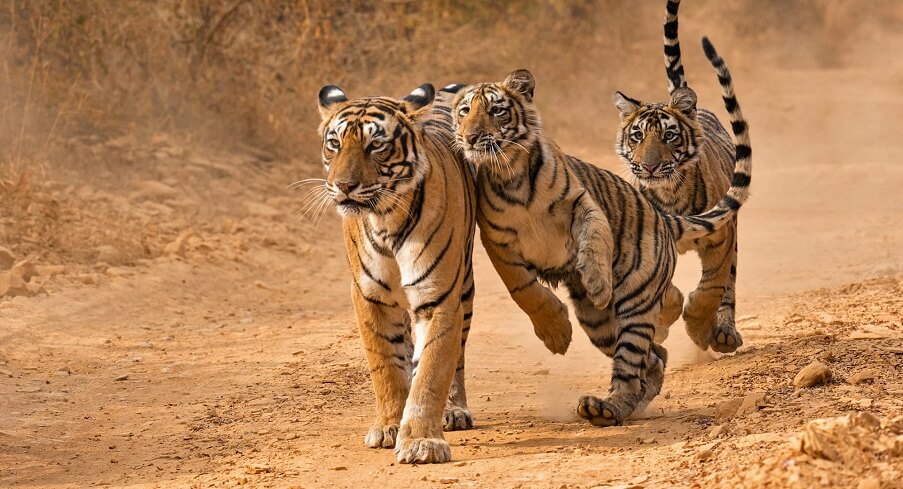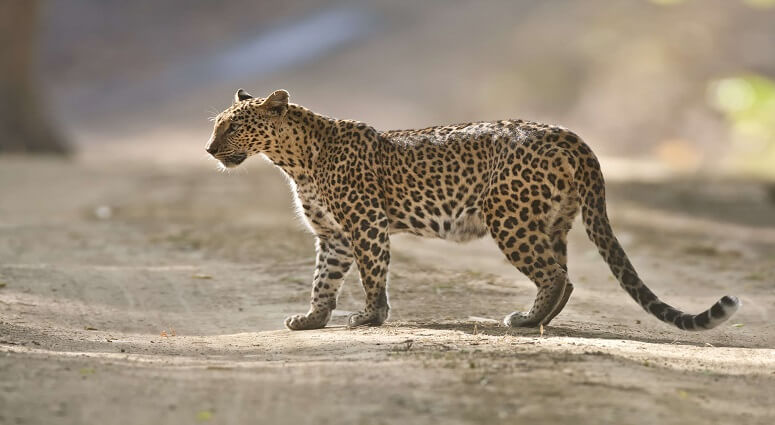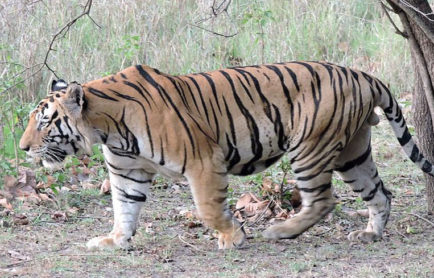Is It Survival of the Fittest as Human-Animal Conflicts Keep on Increasing?
 Last Updated: 06 Feb, 2019 By Ashwini
Last Updated: 06 Feb, 2019 By Ashwini

Recently a piece of news surfaced that a woman was killed by a tiger in Ranthambore National Park in Rajasthan. This was the seventh such case in last two years. This isn’t the first time news like this has surfaced. With a never-ending quest of development, both humans and animals have suffered at the hand of our efforts to form a developed society. While numerous animals stare down at extinction, many humans have also died for no reason whatsoever. So, what is this problem which has killed both humans and wildlife?
How often have we been hearing the news of tiger or leopard being attacked by local villagers or a human losing his/her life after coming in close contact with a wild animal? How often do we get to hear about the cause or solution of this ever growing problem? While the world has lost a majority of its natural wildlife habitat and a vast portion of wild animals are under the endangered category or already extinct, the ever-growing human-animal conflict has proven to be one of the biggest hurdles for wildlife conservation efforts. The reason for the increase in conflicts are purely two fold – encroachment of wildlife habitats that are meant to be the home to these lethal wild animals and the second reason is the uneven distribution of wild animal population across National Park and Wildlife Sanctuaries in India. Before we get onto discuss the root of the problem and solution of it, let’s refresh our memory with recent cases of human-animal conflict.
Also Read
Mankind vs Wildlife

The most famous case of a wild animal losing its life because of human-animal conflict is the infamous case of Avni. After being declared as man-eater by the Forest authority, the tigress was hunted and killed by trained hunters, in collaboration with Forest Officers. The tigress was believed to have killed many local villagers and had supposedly fed on some of those bodies.
- In early November 2018, villagers of a local village in Lakhimpur Khiri area mauled a tiger with tractors. The reason given by villagers was that the tiger had attacked a man from the village, 10 days prior to this.
- Tigress Sundari was transferred to Satkosia Tiger Reserve from Kanha National Park in the year 2018. However, not long after arriving at her new home, she attacked and killed two humans, resulting in villagers retaliating. She had to be tranquillized and kept in confinement.
- A meditating monk was killed by Leopard in Maharashtra’s Chandrapur district. The incident surfaced in December 2018.
- A Leopard was killed in November 2016 by angry Gurgaon villagers after the animal wandered into the village, attacking a local. In order to save the man, villagers attacked the wild animal, eventually killing him.
- A woman was killed by a Tiger in Kundera Range of Ranthambore National Park. This event takes the tally to a total of 7 attacks in the last 2 years in Ranthambore National Park alone.
- An elephant was captured in Haridwar in November 2018 after it strayed into the area. The elephant is reported to have killed a man.
These are just some of the cases of human-animal conflicts, which has been covered by major media houses. There are several other cases of human and animal’s deaths after a conflict.
Not a new problem: We have entered into their territory and not the vice versa
Cases like such haven’t been a recent problem, with earliest recorded conflict dating back to the start of 20th century. The infamous Champawat Tiger was reported to have killed more than 436 humans before it was killed by Jim Corbett in 1907.
From the time that human started intervening into the natural habitat of wildlife animals in search of land, these cases have been prominent. By the year 1950, we had seen a rapid decline in the forest cover and wildlife population and the situation just worsened from that. The robust growth of urban cities was followed by expansion of cities into the natural habitat of animals. This has been credited as a major reason for human-animal conflicts. We have entered into their territory and not the vice versa.
The damage assessment
In a comprehensive study, it was concluded that tiger attacks have killed more humans than any other big cat attacks. A total of 373,000 people have been killed by tigers worldwide, between 1800 to 2009. Of all these attacks, a majority have occurred in South and Southeast Asia. It is also said that an average of one human loses his/her life in India due to human-animal conflict.
Reason for ever-increasing human-animal conflict?

The cause for this problem is simple and complex at the same time. By the mid of 20th century, it was obvious that humans have caused more harm than good to the environment. The constant need to aim for a developed society meant that humans had entered the natural habitat of wild animals. Constant poaching of wild animals for illegal trade ensured didn’t help the cause either.
In the year 1972, Indira Gandhi led government passed the Wildlife Protection Act. The act aimed at protecting the endangered species of flora and fauna and providing natural habitat to them. Under the act, many new territories were designated as National Park and wildlife sanctuary. Special attention was given to preserve the rapid declining Tiger population.
Since then 46 new National Parks have been added with a total of 50 Tiger Reserves and a total of 543 wildlife sanctuaries are currently functioning in India. However, all these natural habitats, including Tiger Reserves and National Parks are supposed to have a buffer zone, which is supposed to be the extra space for these habitats, separating them from the nearest village. These buffer zone also provide extra space for animals to migrate too. However, with constant encroachment in the buffer zone and illegal operations being carried out in the zone meant that humans were coming in direct contact with animals, more often than not.
Now at this point, things get a bit complex. Over time, the wildlife conservation policies in India have shown a positive result, with Tiger population doubling over the past 10 years. The Leopard population has also grown rapidly. Other endangered species have also shown positive results. Now, this meant that more and more animals were wandering in the buffer zone and the sanctuaries were getting crowded.
Ranthambore National Park, Kanha National Park and Bandhavgarh Tiger reserves are three of such examples which now faces a high tiger population. Being an integral part of conservation projects, these parks have witnessed a boom in the wildlife population. A blessing in disguise, the recent survey has concluded that these parks have continued with the previous trend of growing population. The high tiger population is usually followed by territorial wars and migration of wildlife population.
This is where the second cause of the problem comes into play. The uneven distribution of wildlife distribution meant that the majority of the population was concentrated in particular regions, leaving certain sections over-populated.
The shrinking wildlife habitat and over-population in specific regions are attributed to be the two major reasons for human-animal conflicts.
Other factors that come into play
Apart from the above mentioned two reasons, there are some other minor causes for increasing human-animal conflicts. Deliberate human intervention in the natural habitat of wild animals can also lead to human-animal conflicts. Cases of game drive and hunting have often lead to human-animal altercations in the past.
A double barrel gun
What many of us fail to realise, this issue has been hurting wild animals and humans equally. According to the Ministry of Environment’ data, 1,144 people have been killed by wild animals between the period from April 2014 to May 2017.
| Year | Deaths |
| 2014-2015 | 426 |
| 2015-2016 | 446 |
| 2016-2017* | 259 killed by elephants and 27 by tigers |
*data for the year 2017 is only partially released by the Ministry.
The data is the evidence of the damage these alterations have been causing on humans too. On the other hand, humanity has single-handedly killed more than 80% of the world’s total wildlife population. While we aim for the conservation of these animals, endangered species being killed by local villagers mark a dent on the ongoing battle for the conservation of animals.
Also Read
Solution to the problem

Remember when I said earlier that the problem is simple yet complex, the same applies to solutions too. The answer to this problem seems simple – segregate human and animal population, yet it is more complex than that.
- Today, the conservation policies rely heavily on the support of local villagers. To maintain a natural ecosystem, we need humans and animals to co-exist. Hence, we need to ensure a proper buffer zone, which is enough to separate the wildlife parks and nearest villages.
- The second thing that can be done is, providing all the resources to the villagers who are relocated outside the National Parks. In most of the cases, local villagers go inside the buffer zone looking for natural resources, necessary for their survival. By providing plenty of resources at their disposal, the government can ensure that villagers won’t step inside the buffer zone.
- Also, the solution for animal-human conflict has to be subjective to the individual crisis. Creating physical barriers deter animals from entering human populated areas. Wildlife Organisations like WWF has been working extensively to provide solutions all across the globe. In Mozambique, elephants were constantly migrating to villages. In order to prevent that, locals grew Chilli pepper plants all around the village, after realising that elephants dislike plants containing capsaicin, hence preventing them from damaging crops and traversing across local villages.
- A creative way that is being practised in the Western Ghats, villagers are being alerted by text message about a potential risk of animal intervention. Elephants are being monitored by tracking collars, which notify the nearby villages if the elephant is in close proximity. This method can be used on other animals too which pose a direct threat to either of the two parties involved – humans and animals.
- A controversial issue, relocation of the local villages can ensure that animals have enough buffer space between them and nearby human population. In the past, authorities have failed to relocated villages close to National Park. Villagers claim that they get a paltry sum for their lands and they are usually relocated to areas that are not viable for farming. Providing appropriate compensation can encourage villagers to vacate their land and move to new territories.
- Constructing corridors can be another way to reduce human-animal altercations. Last year, three cubs were mowed down by a train inside Vidarbha region, Maharashtra. Constructing corridors for passage of animals can help overcome the issue of Linear infrastructure, thus reducing such accidents.
- There has been constant talk of monitoring and mapping the population of wild animals across all National Parks and Wildlife Sanctuaries. This will help authorities identify the wildlife hotspots and map the areas which are prone to human-animal altercations. These hotspots usually coincide with developed regions, mostly at the edge of National Parks. This will also help authorities monitor the animal population and help identify animals which are needed to be relocated.
- Relocation of the animal population has been a much-debated topic over the years. With some tiger reserves having excessive tiger population, the chances of human-tiger conflicts increases in those regions. However, recently the National Tiger Conservation Authority had tried to repopulate the abandoned tiger reserves in India. This allows Tiger Reserves like Kanha, Ranthambore and Bandhavgarh to relocate some of their tiger population.
- Boosting the eco-tourism can be an excellent method to develop the nearby villages and ensure that nobody enters the National Park in search of resources. In the past, boosting the eco-tourism in and around National Park has proven to be a helpful way to empower the local villagers.
How can you be useful to the cause?
Although there isn’t much that can be done on an individual level, you can still contribute to the ongoing fight against human-animal conflicts. Wildlife Organisations like WWF have been working round the clock to find solutions to such problems. You can contribute to their cause through donations or volunteer to be the part of the cause. Also, in case you find yourself in a situation where you are threatened by the presence of a wild animal, knowing precautionary steps can help you get out of it.
If you think there are any more suggestions that can help end the issue of human-animal conflicts, do let us know in the comment section below.
 Published: 05 Feb, 2019By Ashwini
Published: 05 Feb, 2019By Ashwini
Popular Post
Category by Destinations
Travel Intel
Category by Continent
India recent post
Enquiry Form
Get Customized Travel Quotes from Tour My India








